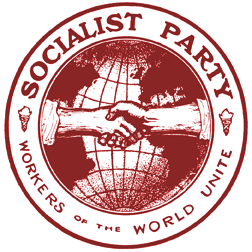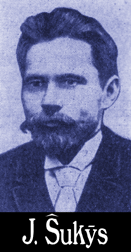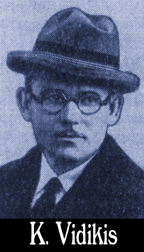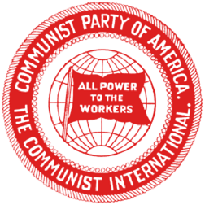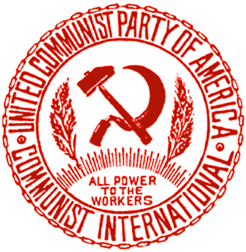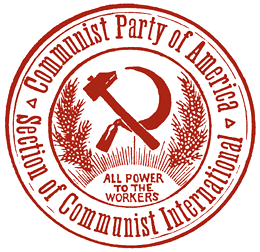Lithuanian Federations
The Lithuanian Emigration to America
Lithuanian emigration began on a mass scale in 1868, a response to the famine of 1867-68. The emigration was economic in intention, although a fair percentage of later emigres were young Lithuanian men attempting to escape conscription into the Tsarist army. Over the next half century fully one-quarter of the Lithuanian people emigrated, mainly to the United States.
[fn: Alfonsas Eidintas, Lithuanian Emigration to the United States, 1869-1950. (Vilnius: Mokslo ir enciklopediju leidybos institutas, 2005), pg. 10.] Lithuania was an oppressed nationality under the Tsarist regime. The Lithuanian-language press was banned, as were Lithuanian cultural organizations. The Lithuanian peasanty was extremely impoverished, the gentry owning land in grossly disproportionate quantities—44% in Vilnius gubernia, 46% in Kaunas gubernia, and nearly 24% in Suwalki gubernia. The landed estates monopolized the most productive agricultural land and also most of the forests. As a result, there was a great agricultural wage-labor surplus in the last decades of the 19th Century.
Lithuanian towns were unable to absorb the surplus agricultural labor. From 1882 the Tsarist regime had prohibited Jews from living in the countryside and engaging in farming; consequently, over 40% of the jobs of the Lithuanian towns were filled by Jews, with additional jobs claimed by Poles (over 15%) and Russians (6%).
[fn: Alfonsas Eidintas, Lithuanian Emigration to the United States, 1869-1950, pp. 22-23.] As a result of rural overpopulation, chronically concentrated farmlands, and limited urban opportunities, rural wages in Lithuania were among the lowest in Europe. Between 1883 and 1888, the average daily wage for farm workers, including meals, in Suwalki gubernia was 42 kopecks for men and 28 kopecks for women. The average Russian farmworker of the period earned less than 1/3 of the amount earned by his American compatriot; and the average Lithuanian farmworker earned significantly less than those of Russia. America stood as an economic beacon for the impoverished peasantry of Lithuania.
[fn: Alfonsas Eidintas, Lithuanian Emigration to the United States, 1869-1950, pg. 24.] From the 1880s onward, the Jewish and ethnic Lithuanian populations of Lithuania began to emigrate at an increased rate. Great Russian national chauvinism festered during these years; Jews were expelled from Moscow and its surrounding districts in 1891-92 and over 76,000 Jews emigrated from the Russian empire in that later year alone. The mass emigration of the ethnic Lithuanian peasantry took place slightly later, with American statistics showing an average of about 11,000 Lithuanian arrivals during 1899-1904; about 19,500 during 1905-07; about 16,500 during 1908-1912; and about 23,000 per year in 1912-13.
In all over a quarter million people emigrated to the United States between 1899 and the coming of the first World War in 1914. Of this number, about 81% were ethnic Lithuanians, 13% were Jews, and the balance were composed of other ethnicities. Probably 20% of these individuals later returned home to Lithuania, leaving a population in America of approximately 200,000 on the eve of the European war.
[fn: Alfonsas Eidintas, Lithuanian Emigration to the United States, 1869-1950, pp. 30, 56, 62, 67.] As the Lithuanian historian Alfonsas Eidintas notes, ‘The biggest migration was during 1904-1914. The causes were undoubtedly economic, but now they were closely intertwined with politics. ...In 1904, on account of military actions in the Far East, almost all the conscription stations in the Trakai district failed to provide enough young men becasue most of them had, with the assistance of local agents, left for the United States... [In Suwalki gubernia] out of 2,705 young men called up only 720 reported fro duty, because the others had emigrated.... Emigration was further stimulated by tsarist suppression of the 1905-1907 revolution and the reprisals of the rampaging bands.’
[fn: Alfonsas Eidintas, Lithuanian Emigration to the United States, 1869-1950, pg. 60.] During the first two decades of the 20th Century, very few Lithuanian intellectuals emigrated to America—the bulk were of peasant origin. Of these about 70% were male and only about 47% over age 14 were literate. While the gender ratio was broadly comparable with that of other nationalities emigrating from Tsarist Russia, the literacy figure paled in comparison to such national groups as the Finns (98% literate) and the Jews (72.6% literate).
[fn: Alfonsas Eidintas, Lithuanian Emigration to the United States, 1869-1950, pg. 60.] Abroad, the emigre Lithuanian peasants were assimilated as industrial workers, including steel workers, meat packers, and miners.
Lietuviu Socialistu Sajunga [Lithuanian Socialist Federation]
The Lietuviu Socialistu Sajunga was organized in 1905.
1. First Convention --- Newark, NJ --- May 21, 1905.
The Lithuanian Socialist Federation of America held its First Convention in May of 1905 in Newark, NJ. The group grew rapidly, its numbers bolstered by a massive wave of emigrants from the Russian empire following the suppressiion of the Revolution of 1905. Early years of the group were marked by a series of factional struggles, with various nationalist and anarchist elements leaving the organization.
2. 2nd Convention --- Waterbury, CT --- April 28, 1907.
The Second Convention of the Lithuanian Socialist Federation of America was held late in April of 1907. It was attended by over 30 delegates from New York, Pennsylvania, Illinois, Michigan, Minnesosta, California, Connecticut and elsewhere. The Socialist Party sent August Beutter of Hartford, CT, as its representative to the gathering in an attempt to win the group's affiliation, but the convention voted against the proposal 22 to 12. The convention did agree to submit a referendum on the issue to its member locals, however. In the words of Beutter, ‘The increased cost of affiliation with our party seemed to be the greatest obstacle in their way.’
[fn: August Beutter, ‘Report of August Beutter, Representing the Socialist Party at National Convention of the Lithuanian Socialist Organizations,’ in Socialist Party Official Bulletin, v. 3, no. 9 (May 1907). pg. 2.]
Lithuanian Socialist Federation of America Affiliates with the Socialist Party of America
In 1914 the Lithuanian Socialist Federation voted by a very small majority to join the Socialist Party, becoming the Lietuviu Socialistu Federacija. Its membership plummeted in the aftermath of this decision, dropping from 3,500 before affiliation to a little over 2,000 afterwards.
The Lithuanian Socialist Federation published a weekly newspaper called Kova (The Struggle) as its official journal as well as a monthly theoretical magazine called Gadyne (The New Age). Both of these publications were based in Philiadelphia, Pennsylvania, the headquarters of the Lithuanian Socialist Federation. In addition to these papers, there was a Lithuanian daily newspaper published in Chicago, a semi-weekly, in Brooklyn, two weeklies (Boston and Pittsburgh), and a monthly in Worchester, Massachusetts. A fairly vast socialist literature was also published in the Lithuanian language by cooperative publishing associations associated with the Lithuanian Federation.
The Lithuanian Federation was governed by Conventions held every other year, attended by delegates elected by the membership. Afive member Executive Committee and a three member Committee on LIterature was chosen; the Executive Committee selecting a Business Manager to handle the daily operations of the organization. The membership elected the group's Translator-Secretary (primarily an employee of the SPA National Office) as well as the Editor of the party press.
[fn: C.A. Herman ,’ The Lithuanian Socialist Federation’ in The American Labor Year-Book, 1916. (NY: Rand School Press, 1916), pp. 140-141; ‘The Lithuanian Social Democratic Federation,’ circa 1918, Socialist Party of America Papers, microfilm reel 94.]
On Sept. 20, 1915, a semi-autonomous publishing arm of the LSF of A was established, the Lithuanian Workers Literature Society (LWLS). This organization was based upon a local structure of ‘groups’ of at least 5 members, who paid $1 annual dues and met monthly. The purpose of the organization was ‘the publishing of such writings which would raise throughout the masses of workers class consciousness, socialistic intellect, and solidarity, and otherwise broaden the boundaries of their knowledge.’ The organization had central officers and met in convention at the same time and place as the LSF of A.
The LWLS Constitution was published bilingually in Lithuanian and English in 1919 and may be downloaded here.
The LWLS published a sizeable number of socialist titles, both translations of English language works and original work in English, continuing its work into the 1930s.
[fn: Lietuviu Darbininku Literaturos Dr-gijos Konstitucija: Suorganizuota 20 d. Rugsejo, 1915 m. (Brooklyn: ‘Laisves’ Spaustuve, 1919), pp. 25-51.]
1. Convention --- Chicago, IL --- Sept. 1-5, 1916.
There were 69 delegates to the September 1916 Convention of the Lithuanian Socialist Federation, representing 2,151 members in 129 branches. The gathering saw heated factional debate between ‘internationalists,’ headed by V. Kapsukas and J. Shukys and ‘centrists,’ headed by P. Grigaitis and S. Michelsonas. The Convention came down decidedly in the anti-militarist ‘Internationalist’ camp.
During 1917, the following were the officers of the Lithuanian Federation:
Business Manager: Joseph Shukys [Juozas Sukys].
Translator-Secretary: Joseph B. Stilson [Juozas Stilsonas].
Editor: Kazimieras Vidikas.
Executive Committee: Joseph Jukelis, Adoph Solynas, Joseph Ramannauskas, John P. Raulinaitis, Anthorny Kairys.
Committee on Literature: J. Baltrusaitis, C.A. Herman, A. Montvid.
On December 7 and 14, 1917, and September 1, 1918, search warrants were served on the National Headquarters of the Lithuanian Socialist Federation in Philadelphia, and evidence taken. Shukys and Stilson were subsequently prosecuted under the so-called Espionage Act for allegedly inhibiting military conscription.
[fn: C.A. Herman ,’ The Lithuanian Socialist Federation’ in The American Labor Year-Book, 1916. (NY: Rand School Press, 1916), pp. 140-141; ‘The Lithuanian Social Democratic Federation,’ circa 1918, Socialist Party of America Papers, microfilm reel 94.]
The Lithuanian Socialist Federation was suspended by the NEC of the Socialist Party at the beginning of June 1919, ostensibly for endorsing the Manifesto of the Left Wing Section.
In January of 1920 a reorganized Lithuanian Socialist Federation came before the meeting of the NEC of the SPA in New York City with a resolution repudiating and withdrawing their officials. On the motion of Committeeman Goerge Roewer, they were reinstated as the Lithuanian Socialiist Federation and Executive Secretary Otto Branstetter was instructed to recognize D. Matuz as the new Translator-Secretary of the Federation.
[fn: The World [Oakland, CA], whole no. 716 (Jan. 9, 1920), pg. 4.]
The Socialist Party continued to have an affiliated Lithuanian Federation at the end of the 1920s—albeit a small one. The group counted an average paid membership of 87 for the first 10 months of 1927, but fell precipitously to an average of just 33 for the comparable period of 1928. This seems to have marked an end to the SP's Lithuanian organization.
[fn: Letter of National Executive Secretary Willam H. Henry to the NEC of the SPA, Nov. 24, 1928. Original in Bob Miller collection.]
Lietuviu Komunistu Federacija [Lithuanian Communist Federation]
1. First Convention --- Brooklyn, NY --- Sept. 27-Oct. 1, 1919.
The Lithuanian Federation formally left the Socialist Party at its 1919 convention, held in Brooklyn, NY. There were a total of 112 delegates to this gathering, representing a cliamed membership of about 9,000 in 266 branches. It was attended by Jay Lovestone and Alex Bittelman on behalf of the Communist Party of America.The convention voted to affiliate with the newly founded CPA, renaming itself the Lietuviu Komunistu Federacija. This Lithuanian Federation was one of the primary participants in organization of the Communist Party of America. The Lithuanian Federation was numerically the largest language group of that organization throughout its existence. Translator-Secretary for the Lithuanian Federation both before and after the SPA split of 1919 was Joseph Stilson.
The Lithuanian Federation of the old CPA was governed by an Executive Committee which included the following:
Secretary of the EC: Kalnas; Members: Leon Osinskis, Paseiminis, Penktas, Septintas, Zagvietis
The Lithuanian Federation divided the country into districts and made use of paid District Organizers.
[fn: Comintern Archive: f. 515, op. 1, d. 75, l. 60.
2. 2nd Convention --- [city?] --- [date?] 1920?
Lithuanian Groups of the United Communist Party of America
There were very few primary party units of the UCP which spoke Lithuanian—only 7 out of 673 in Decembe of 1920, according to party statistics. Four of these groups were located in the Detroit district, with one of the others in Seattle.
Lithuanian Federation of the (unified) Communist Party of America
In late 1921, during the 5 months between formation of the unified CPA and the split of the Central Caucus faction, the Communist Party's Lithuanian Federation had an average monthly paid membership of 1,166, making it the 2nd largest Language group in the party.
3. 3rd Convention --- [city?] --- [date?] 1921?
Lithuanian Bureau of the Central Caucus faction's ‘Communist Party of America’
The leader of the Lithuanian section of the Central Caucus faction was ‘Leon,’ a former member of the Central Executive Committee of the old CPA.
On June 21, 1922, faced with the ultimatum of the Executive Committee of the Communist International to rejoin the official Communist Party of America, the Central Bureau of the Lithuanian Federation of the Central Caucus faction voted unanimously to rejoin the majority organization, issued an appeal to their members to do likewise, and turned over all records to the majority group. ‘B. Karpus’ signed as secretary of the Central Caucus faction group.
4. 4th Convention—[city?] --- [date?] December 1922?
The 4th Convention of the Lithuanian Federation was held under conditions of secrecy. It was attended by 16 regular delegates from 6 of the CPA's 9 regional districts and included 9 fraternal delegates: a CEC representative [’Sprague’}, a representative of the WPA's Lithuanian Language Section, two members of the Lithuanian Federation's governing Central Bureau who were not otherwise elected delegates, two representatives of ‘legal institutions’ (the newspapers Laisve [’Liberty’: Brooklyn] and Vilnis [’The Surge’: Chicago]), and a security committee of two. Only one of those present was a former loyalist of the Central Caucus faction, the rest had retained their affiliation to the unified CPA over the 1922 troubles.
The gathering discussed the party press and other Lithuanian ‘legal’ institutions at length, voted not to allow ‘Comrade Leon’ to take over the editorial role of the Chicago Vilnis, and came out strongly for a reduction of dues rates (which were 50 cents per month both for the CPA and the WPA) and for a capping of the wages paid to Party workers as a means of cost containment. Elections were held for a new Central Bureau of the Lithuanian Federation and the following were elected (probably pseudonyms):
K. Povas (receiving 16 votes); Peters (15 votes); Burke (14 votes); Kalnas (14 votes); Garsas (13 votes); Camden (11 votes). Alternates (in sequence were to be: Sarkaite (14 votes); Buceraitis (12 votes); Zubrys (11 votes); Raiston (10 votes).
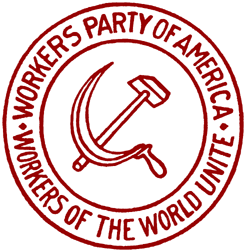
Lithuanian Federation of the Workers Party of America
With the move to the so-called ‘Legal Political Party,’ the Workers Party of America, those Lithuanians remaining loyal to the CPA became Lithuanian language branches of the new organization.
1. 1st Convention --- [city?] --- [date? 1922?]
2. 2nd Convention --- Chicago, IL --- Jan. 5-6, 1924.
The 2nd Convention of the Lithuanian Federation of the WPA was held in Chicago and was attended by 22 delegates representing 81 branches of the Federation. Ten fraternal delegates were also seated.
The convention heard the report of the Central Executive Committee delivered by Abram Jakira and a report on the situation in the United Mine Workers of America delivered by Thomas Myerscought. Both reports were accepted unanimously.
New officers elected for the Lithuanian Federation consisting of the following:
Secretary:
editor of Vilnius:
Bureau (5):

1908
MAY
’Report of Committee on Foreign Speaking Organizations to the National Convention of the Socialist Party, May 17, 1908.’ Committee report to the 1908 SPA Convention in Chicago, delivered by S.A. Knopfnagel. The Committee advocated the acceptance of all foreign language organizations seeking affiliation with the Socialist Party, subject to 5 conditions: ‘(1) They are composed of Socialist Party members only. (2) Any foreign speaking organization having a national form of organization of its own be recognized only if all the branches composing this organization having been chartered by the national, state, or local Socialist Party organizations, and pay their dues to the respective Socialist Party organizations. (3) No foreign speaking organization asking the Socialist Party for recognition shall issue their own particular national, state, or local charters. Same to be issued only by the respective organizations of the Socialist Party, as the case may require. (4) All foreign speaking organizations affiliated with the Socialist Party must and shall conform in every respect with the Socialist Party national, state, and local constitutions, platforms, and resolutions. (5) They should function only as agitation, education, and organization bureaus of the Socialist Party.’ Includes an amendment made from the floor but not published in the SP's Official Bulletin (probably due to incompetence rather than malice) prohibiting the refusal of admission to the SPA on account of race or language.
1919
February
Report of the Delegate of the Lithuanian Socialist Federation to the Conference of the Russian Immigrant Revolutionary Socialist Federations, by I.J. Kravcevic [held Feb. 9, 1919] Due to the high survival rate of periodicals and documents of the Anglophonic Left Wing movement of 1919 (and the ability of scholars to make use of them), we know a great deal more about the ideas and actions of the small band of English-speakers in New York than we do about a larger parallel movement in the ranks of the Socialist Party among those who spoke Russian, Lithuanian, Yiddish, Latvian, Croatian, Ukrainian, Finnish, Polish, or any other of about a half dozen languages. This translated document from the Lithuanian press helps enrich our understanding. On Feb. 9, 1919, a conference was held in New York City by delegates of the “Revolutionary Socialist Federations of the Socialist Party of America.” It is not at this time known who planned this gathering or when the call for it went out—planning certainly predated the first session of the Left Wing Section of Greater New York, which held its organizational meeting on Feb. 2, 1919. The Conference of “Russian Immigrant Revolutionary Socialist Federations” included delegates from the Russian, Latvian, Ukrainian, and Estonian language sections of the Socialist Party, this report by Lithuanian delegate I.J. Kravcevic notes. Radical discontent with “opportunist” policies of the Socialist Party leadership had been brewing, and the decision was made “there is need for organized and disciplined revolutionary action within the party now”—a formal organization of revolutionary socialists within the SPA. “We have to combine all of these federations and separate groups within the party into a Left Wing of the SP, to start and organize a bitter fight with the opportunists within the party in order to establish a program of the principles that would fit the present revolutionary movement of the working class,” Kravcevic noted, adding that “in order to discourage the opportunists from distorting these principles, there should be a party discipline and those not complying with it should be ejected from the party without further ado.” Additional goals of the gathering were to make contact with the Russian Soviet government and to establish an information bureau on its behalf to make the real situation in Russia known to Americans.
SEPTEMBER
Constitution of the Lithuanian Workers Literature Society, (Organized Sept. 20, 1915).’ [Published in 1919]. A rare document seized and saved for posterity by the Lusk Committee. The Lithuanian Workers Literature Society was a membership-based adjunct of the Lithuanian Socialist Federation of America dedicated to ‘the publishing of such writings which would raise throughout the masses of workers class consciousness, socialistic intellect, and solidarity, and otherwise broaden the boundaries of their knowledge.’ Annual dues of $1 funded the society, which published its works through the Brooklyn, NY ‘Laisves’ publishing house, and entitled members to purchase the publications of the LWLS at half price. Meetings were held monthly, conventions were held in conjunction with the conventions of the LSFA, and the society maintained a ‘Scholar's Fund’ to finance additional work in the Lithuanian language. This is the basic document of organizational law for the LSFA, originallly published as a pamphlet in 1919 in both Lithuanian and English.
1919
JUNE
’Scuttling the Ship: A Statement of the Seven Suspended Language Federations, June 2, 1919.’ This is the joint protest statement of the 7 affected Language Federations of the SPA (Russian, Lithuanian, Ukrainian, Polish, Hungarian, South Slavic, and Latvian) in response to the May 27 action of the party's National Executive Committee to unilaterally suspend the entire memberships of these organizations. The ‘autocratic 7’ members of the National Executive Committee who approved this action on ‘over 30,000 dues payers’ are rebuked for failing to provide notification, time for preparation, or a trial. In addition, the NEC bloc of 7 suspended the party elections and expelled the Michigan organization of nearly 6,000 without trial, locked up the party headquarters in the hands of a private holding company outside of party control, and arbitrarily threw the Translator-Secretaries of the affected federations out of party headquarters without allowing time for them to locate new quarters. ‘In short, this group of seven National Committeemen, drunk with power they assumed, feeling aggrieved because these federations dared to criticize the National Executive Committee, made themselves guilty of an act which will discredit them forever in the International Socialist movement,’ the joint statement charged.
United Communist Party—’Groups’ According to Language: As of December 1920.’ This is based upon an internal document of the United Communist Party captured by the Department of Justice's Bureau of Investigation in the April 1921 raid on UCP National Headquarters in New York. The UCP prided itself on having largely eliminated the federation-based form of organization which typified its rival, the Communist Party of America. Groups (Primary Party Units of between 5 and 10 members) were nevertheless based around language as well as geography and statistics tabulated by the organization. This snapshot from the midpoint of the UCP's one year of existence surprisingly shows more South Slavic (Croatian and Slovenian) language groups than any other (144), followed by the Russian (136), English (121), German (61), Latvian (49), Yiddish (37), Lithuanian (34), and Finnish (31) language groups.
MAY
CPA Condensed Cash Statement, Feb. to May 1921, Including Federations, But Not Including Payments to and from the National Office and the Federations: Presented to the Joint Unity Convention, Woodstock, NY - May 15, 1921.’ This is a very esoteric budget document, but specialists in the history of the early American Communist movement will probably immediately recognize its import. For me, at least, this document has led to a fundamental rethinking about the nature of the old CPA, for it shows that the organization truly was a ‘federation of federations.’ Five of the old CPA's 6 Language Federations possessed assets at least twice the size of the National Office of the organization. The same 5 possessed printing plant in excess of the National Office. Three of them retained substantial real estate holdings. Three of them spent more money than the National Office on literature production, and a fourth spent approximately the same amount as the National Office. These were clearly fully functioning political organizations in their own right, not tiny social groups of members speaking a common language. It is little wonder that the ‘Federation Issue’ stood so large on the landscape as the primary issue impeding merger efforts between the UCP and the old CPA for so long and fueling the Central Caucus split that erupted in late November of 1921.
1922
FEBRUARY
The Situation in the Lithuanian Federation,’ by Joseph Stilson [Feb. 1922] The split of the Central Caucus faction, centered in 5 of the 6 Language Federations of the old CPA, dealt a devastating financial blow to the already precarious budget of the unified Communist Party of America. Largest of the Communist language organizations in 1921 was the Lithuanian language group, which exited at the end of November behind the leadership of the as-yet unidentified ‘Leon’ and ‘Zemotis.’ This account by the highest-ranking Lithuanian-American on the Central Executive Committee of the CPA details the struggle to win back the bolting Lithuanian Federations to the party. Stilson (’Riley’) says that the task began with the meeting of about 14 loyalist leaders in New York (presumably in December 1921). Utterly without funds and paying their traveling expenses out of pocket, a group of Lithuanian organizers from this reorganized ‘Federation Bureau’ spread across the Eastern US, addressing Lithuanian branches. The Philadelphia District of the Lithuanian Federation (home base of the Federation organization) was the first to reaffiliate with the majority CPA, according to Stilson; thereafter, other Districts began to fall back into line. At the time of the writing, the pivotal New York, Philadelphia, and Chicago districts had all declared themselves behind the CPA majority (as well as 3 smaller districts). In Buffalo the majority CPA had a clear majority, while the Central Caucus and the CPA majority split the Detroit district. The Central Caucus' support was based in Boston, Pittsburgh, and Cleveland, according to Stilson, including ‘the most backward localities.’ Stilson identifies three social groups behind the Central Caucus: (1) several leaderswho lost their positions on account of reorganization of the Language Bureau; (2) a few excitable would-be leaders intent on shouting about the need for armed insurrection ‘t every nook and corner’; (3) ‘working men who have the best of intentions but lack the understanding of even the primary aspects of the class struggle.’ Stilson remarks that ‘the latter, for obvious reasons, can very well be led by any phrase revolutionary.’
JUNE
Declaration to the Central Executive Committee of the Communist Party of America, Section of the Communist International,’ by Central Bureau, Lithuanian Federation of the Central Caucus faction. [June 21, 1922]. Faced with an the ultimatum of the Executive Committee of the Communist International to rejoin the official Communist Party of America or face expulsion from the Communist International, the Central Bureau of the Lithuanian Federatiion voted unanimously at its June 21, 1922, session to rejoin the official party, to turn over its records to the majority group, and to appeal to the members of the Lithuanian Federation to do likewise. The document was signed by ‘B. Karpus’ as Secretary of the Central Caucus faction's Lithuanian Federation.
OCTOBER
Minutes of the Lithuanian Bureau, CPA: Meeting of October 18, 1922,” by “V. Grazys” This esoteric document provides important clues about the history of the underground Communist movement in 1922. 1) Evidence that the Central Caucus faction’s Lithuanian Bureau which dissolved itself on June 21, 1922 to meet a June 25 Comintern deadline was immediately replaced by a new irreconcilable Central Caucus Lithuanian Bureau, and that this second Bureau did not return to the fold until after the little-known 2nd Convention of the Central Caucus’ “Communist Party of America” in September 1922; 2) That strong opposition to the decision to return remained among the rank and file of about 240 Lithuanian opposition supporters even after the September convention that dissolved the Central Caucus faction; 3) That there was confusion due to structural parallelism between the underground (#1) and legal (#2) party organizations. Contradictory instructions were transmitted from the Secretary of each of those organizations, which forced the Lithuanian Bureau to seek clarification from the party’s CEC; 4) That rather than directing action of the legal apparatus with regard to the 5th Anniversary of Soviet Russia celebration, that the underground apparatus merely ratified decisions made by the legal organization, and thereafter explicitly allowed further planning for the event to be conducted by the legal apparatus — practice at odds with the theoretical model of “#1 and #2.” This session of the Lithuanian Bureau was attended by a representative of the former Central Caucus faction opposition, who delivered a report on the status of the Lithuanian opposition.
DECEMBER
Minutes and Theses of the 4th Annual Conference, Lithuanian Federation, [circa Dec. 1922].’ by ‘R. Margis.’ There is a tendency in the literature to see the world from the ‘top-down’ —the Soviet Leader decides, the Comintern complies and issues orders to the national parties, the Executive of the national party in turn transmits the order from the center. This is a false conception of the reality of the early Communist movement, as this document indicates. As this document demonstrates, far from demonstrating blind and unthinking obedience to central authority, the substantially sized and important Lithuanian Federation of the Communist Party transmitted protests, decisions, and recommendations of their own to the center: Collection of dual dues (50 cents per month for both the underground CPA and the legal WPA) were excessive and stunted growth—something needed to be done; an important leader who had strenuously backed the Central Caucus split was unfit for editorship of the Chicago Lithuanian newspaper —a replacement was named instead; a slate of candidates was named for the Lithuanian Federation's Bureau—and another slate put forward by the underground convention for the Bureau of the Lithuanian Section of the WPA; all Party organizations should establish special commissions for recruiting new members; Party wages needed to be capped. All these things were ideas, inputs, decisions flowing from the ‘bottom-up’—to the center from the Lithuanian Federation's governing annual convention. While such institutions may well have been ignored and eliminated in future party practice, their existence and influence in the early communist movement, dominated as it was by non-english federations, should never be forgotten.
1923
OCTOBER
Statement to the Central Executive Committee of the Communist Party of America from the Lithuanian Bureau on the Proposed Reorganization of the Party,” by K. Povas [circa March 1923] Communique of the Secretary of the Lithuanian Bureau of the unified CPA to the governing Central Executive Committee taking issue with the decision to amalgamate the underground and legal wings of the organization. “The latest reorganization of the proposed CEC is contrary to the decisions and spirit of the 2nd Convention [Bridgman, MI: Aug. 17-22, 1922]; it actually forces upon the Party such a basic reform for which the CEC has no mandate,” Povas notes. Povas adds: “The attempt to force the Party into open existence is in full swing at a time when the CEC itself admits that the underground organization is still very weak. Such an experiment may result in a great chaos among the membership and may entirely cast aside the most important task of the hour—the reorganization of the underground Party and the strengthening of its forces... If in view of the proposed reorganization we will start a discussion on the advisability of coming into the open, then the most important campaign, the slogan to build up the Party will be in vain; it will disappear in the midst of a pro and con talk about liquidation.” Povas declares that “in its attempt to artificially raise the Party to open existence, the CEC should have had at least the majority of the Party membership solidly behind the proposed plan. Is this so? The overwhelming rejection of the CEC’s plan by the membership almost everywhere in the presence of the representatives of the CEC does not indicate such a condition.”
DECEMBER
’Membership Series by Language Federation for the Workers Party of America. 'Dues Actually Paid'—January to December 1923.’ Official 1923 data set of the Workers Party of America, compiled from a document in the Comintern Archive. This series shows a great numerical dominance of the WPA by its Finnish Federation, accounting for a massive 42.8% of the average monthly paid membership of the organization (6,583 of 15,395). The total of the English language branches is the 2nd strongest amongst the federations (7.6%) followed by the South Slavic (7.5%), Jewish [Yiddish language] (6.9%), and Lithuanian (6.0%) Federations. In all, there were statistics kept for 18 different language groups of the WPA in 1923, including the English and the barely organized Armenian sections.
’Initiation Stamps Sold by Federation for the Workers Party of America. January to December 1923.’ Official 1923 data set of the Workers Party of America, compiled from a document in the Comintern Archive. This series once again (repeating the previous published 1924 series) shows a schizophrenic pattern of stamp sales among language groups . Some federations clearly did not collect the initiation fees called for in the WPA constitution at all (Jewish, German, Latvian) while at the same time the quantities sold via the English branches are ridiculously high. Over 53% of the initiation stamps sold for the entire WPA were credited to the English branches—nearly three times as many initiations than there were average duespayers in those English branches! Even assuming a significantly higher than average ‘membership churn’ rate for English branches, there is clearly some other unexplained phenomenon at play in these English branch initiation stamp sale figures...
undetermined date
’Membership Series by Language Federation for the Workers Party of America. 'Dues Actually Paid'—January to December 1924.’ Official 1924 data set of the Workers Party of America, compiled from a document in the Comintern Archive. This shows a continued numerical dominance of the Workers Party of America by its Finnish-language federation, averaging a paid membership of 7100 (41% of the entire organization) for the year 1924. Impressive growth is shown by the Yiddish-language (’Jewish’) federation, which moved to the third largest language group in the WPA in 1924. The English branches comprised the second largest language group in the WPA, but still remained just 11% of the overall organization. The South Slavic federation (predominately Slovenian and Croation) was the 4th largest language group in the WPA, topping the Russian, Lithuanian, and Ukrainian federations.
’Initiation Stamps Sold by Federation for the Workers Party of America. January to December 1924.’ Official 1924 data set of the Workers Party of America, compiled from a document in the Comintern Archive. An extremely interesting monthly series in which two unexplained anomalies are apparent: (1) The failure of at least 8 of the WPA's 18 language sections to make more than a token effort to collect the $1 initiation fee and obvious similar behavior (to lesser degree) among branches of other language groups; (2) A preposterously large sale of 5,264 initiation stamps to ‘English’ branches, which averaged a paid membership of just 1909 over the course of the year. Either there was a revolving door in the English branches that was entirely dissimilar to the situation in any other language group of the WPA; or there was some sort of effort to collect initiation fees among ‘English’ workers without organizational follow up; or there was some sort of strange accounting practice used by the WPA in which miscellaneous sales of initiation stamps were lumped into the ‘English’ category (or some combination of these explanations). A perplexing question in raised, with further archival research clearly necessary.
OCTOBER
’Letter to C.E. Ruthenberg, Executive Secretary, Workers Party of America in Chicago from Antonas Bimba, Staff Member of Laisve, Brooklyn, NY. Oct. 8, 1924. This unpublished letter to Executive Secretary Ruthenberg from Lithuanian-American Communist journalist Bimba is extremely interesting on two levels. First, Bimba is critical of the tendency to issue frequent monetary appeals, in this case for the Daily Worker, and he claims that the constant pleading for funds is disorganizing the party: ‘...The membership of the party, and especially the members of various language sections, who have to support the language press, are being bled white with financial appeals. Hundreds of members stay away from the meetings just because they know that as soon as they step into the hall they will be asked to give a dollar or half a dollar for this or that purpose. Branch meetings are almost entirely taken up by discussions, fights, and arguments on the constantly flowing appeals for financial help. Our party is fast becoming only a money-getting agency.’ Second, Bimba reveals how it was that the Communist language press was able to sustain itself, boatloads of Comintern cash not in evidence: ‘I made a suggestion that the comrades should establish an efficient machinery for doing outside jobs, such as printing of tickets, show cards, throwaways, leaflets, programs, etc. Then an appeal should be made to the party units and organizations under our influence that they should send their jobs to be done by the Daily Worker's printing establishment.... We find from experience that this is a permanent and most important financial resource of the paper. The Lithuanian daily, as such, brings a deficit of thousands of dollars every year, but most of this deficit is being covered from the source mentioned above.’ Bimba states that he believes the Daily Worker can be made a self-sustaining publication given the size of the party organization if its job printing function is expanded. The document here includes a short biographical footnote of Antonas Bimba.

